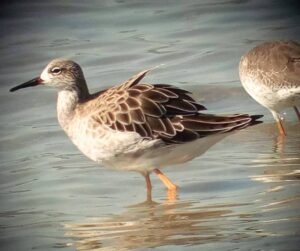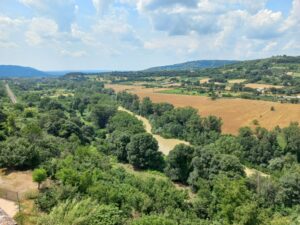Birding trips from Rome
From a convenient base in Rome, birders can find plenty of opportunity for a break from the intense cultural experiences of the Eternal City. Just north of the town there are many areas where bird species associated with almost all habitat types, from wetlands  and forests to cultivated fields, can be observed, whether nesting, wintering, or pausing during spring and fall migration.
and forests to cultivated fields, can be observed, whether nesting, wintering, or pausing during spring and fall migration.
Alviano Lake is an important hotspot for thousands of migratory birds and an important nesting site. A 2200-acre nature reserve here protects a mosaic of habitats comprising shallow wetlands, a riparian woodland, and reedbeds. More than 150 bird species have been recorded here. From November to March each year, the lake hosts high concentrations of shorebirds, ducks, herons, geese, and grebes. In spring and summer, the reedbeds are home to reed and great reed warblers, little bittern, and purple heron. Little egrets, cattle egrets, squacco and night herons occupy a highly active and noisy colony between February and August. Raptors are easy to see over the wetland; the most common are marsh harriers, black kites, peregrine falcons, and buzzards. Among the many species to be sought here are European roller, lesser kestrel, hopooe, bee-eaters, ferruginous ducks, and pygmy cormorants.
Lake Vico Natural Reserve covers almost 8000 acres of varied habitat, including a huge marsh and a vast forest. The entire area is surrounded by a mountainous ring, the remnant of a volcano that collapsed around 400,000 years ago. The forests here are home to most of Italy’s woodland birds, including raptors such as the common buzzard and sparrowhawk. Woodpeckers of three species—green, great spotted, and lesser spotted—are also common here.
“First of all, Marco is a great conversationalist, pleasant to be with, knows where to find good Italian food and knows where to find and identify birds. There is no secondly” – Happy Customer from TripAdvisor
